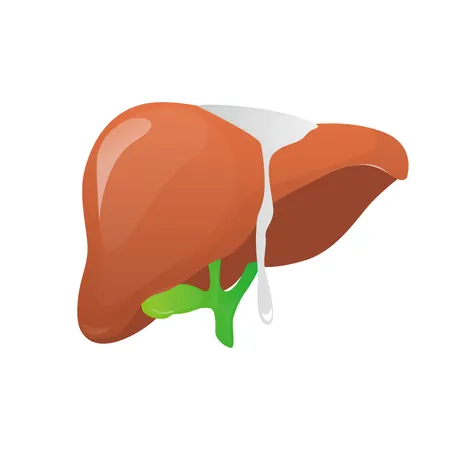
New Research Promises to Combat Fatty Liver Disease by Targeting Hormones
2025-03-26
Author: Yu
Introduction
In a groundbreaking study from Yale University, researchers have uncovered a promising new approach to treat fatty liver disease by honing in on hormones that influence fat deposits outside the liver. This research, published in "Cellular and Molecular Gastroenterology and Hepatology," could revolutionize the treatment landscape for patients genetically predisposed to the condition.
Overview of Fatty Liver Disease
Fatty liver disease, particularly the metabolic associated dysfunction steatotic disease (MASLD), is characterized by an unhealthy buildup of fat in the liver. Disturbingly, it is estimated that about 30% of the global population suffers from this disorder, which is exacerbated by the rising prevalence of obesity and type 2 diabetes. As diagnosis rates soar, the condition not only damages the liver but is also linked to grave outcomes, such as inflammation, scarring, and an increased risk of liver cancer.
Genetic Insights
The research highlights a specific genetic variant, PNPLA3I148M, which significantly increases the risk of MASLD. However, the mechanism behind how this variant contributes to fat accumulation in the liver has remained elusive. Recent findings suggest that changes both inside and outside the liver caused by this variant are key to understanding the disease's progression.
Research Methodology
Utilizing genetically modified mice that carry the PNPLA3I148M variant, the researchers discovered a notable finding: while these mice developed more fat in the liver when fed a high-sugar diet, they also accumulated less fat in their adipose (fat) tissue. This paradox hinted at a dysfunction in adipose tissue, indicating that hormones might play a crucial role in fat deposition and metabolism.
Role of Catecholamines
The researchers explored the role of catecholamines—hormones like adrenaline and noradrenaline—in influencing fat storage. They treated the genetically altered mice with a drug that mimicked these hormones and observed that the treated mice broke down more fat in adipose tissue. However, this fat then accumulated in the liver, emphasizing the importance of these hormones in the disease's pathology.
Potential Treatment with Beta Blockers
To counteract this alarming effect, the Yale team administered beta blockers—medications commonly used to manage hypertension—to the PNPLA3I148M mice. Remarkably, those treated with beta blockers showed a significant reduction in liver fat accumulation, suggesting that blocking catecholamine action outside the liver may lower the risk of fatty liver disease.
Cautions for Human Application
Nevertheless, while these results are promising, experts caution that translating this research into human treatment is a complex process. Daniel Vatner, the study’s lead author, emphasized that various factors, such as alcohol consumption and other health conditions, could complicate the effects of beta blockers in humans.
Future Research Directions
Looking ahead, researchers like Vatner are eager to conduct further studies, including potential clinical trials, to determine if these findings in mice can be replicated in human patients. The goal is to unlock new therapeutic strategies that could change the lives of countless individuals battling fatty liver disease.
Conclusion
In summary, while the journey from laboratory results to effective treatments can be lengthy and complicated, this innovative research paves the way for future interventions that could significantly reduce the threat posed by fatty liver disease. Stay tuned for more updates as this important field of study progresses!


 Brasil (PT)
Brasil (PT)
 Canada (EN)
Canada (EN)
 Chile (ES)
Chile (ES)
 Česko (CS)
Česko (CS)
 대한민국 (KO)
대한민국 (KO)
 España (ES)
España (ES)
 France (FR)
France (FR)
 Hong Kong (EN)
Hong Kong (EN)
 Italia (IT)
Italia (IT)
 日本 (JA)
日本 (JA)
 Magyarország (HU)
Magyarország (HU)
 Norge (NO)
Norge (NO)
 Polska (PL)
Polska (PL)
 Schweiz (DE)
Schweiz (DE)
 Singapore (EN)
Singapore (EN)
 Sverige (SV)
Sverige (SV)
 Suomi (FI)
Suomi (FI)
 Türkiye (TR)
Türkiye (TR)
 الإمارات العربية المتحدة (AR)
الإمارات العربية المتحدة (AR)